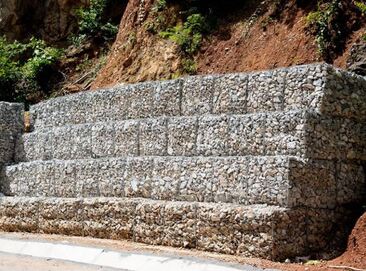What is a Retaining Wall and How Does it Work?

A retaining wall is a structure that is made to hold back soil on a slope or a raised area. It can be built using a number of materials, such as concrete, brick, stone, or wood. Retaining walls are commonly found in landscaping projects to produce different quantities of elevation, prevent soil erosion, and improve the look of outdoor spaces. In this post, we shall discuss what a retaining wall(támfal) is, how it works, and why it is essential to possess one in your backyard.

1. The purpose of a Retaining Wall
The primary intent behind a retaining wall is to stop soil erosion on a slope. When there is a significant difference in elevation between two regions of your backyard, the soil will naturally slide down the slope, causing erosion and making the location unstable. A retaining wall is made to keep back the soil, preventing it from sliding down the slope and protecting the area below it.
2. The Design of Retaining Walls
Retaining walls are generally designed in a stepped formation, with each level providing support for the one above it. The wall's height, length, and angle of incline will depend on the slope's steepness, the kind of soil, and other factors. The wall might be curved or straight, and it can be constructed using among several materials.
3. Forms of Retaining Wall Construction
The most common materials useful for retaining wall construction are concrete, stone, brick, and wood. Concrete is a popular choice because it's strong, durable, and easily customizable. Stone and brick may also be popular choices, as they supply an all natural aesthetic that blends well with outdoor environments. Wood is ideal for smaller retaining walls but might not be as durable as other materials, especially in areas with high rainfall and other harsh weather conditions.
4. Developing a Retaining Wall
Building a retaining wall is a complex process that typically requires the expertise of a specialist landscaper or builder. The first step is to gauge the site's soil conditions and determine the correct design and material. Once the style is finalized, the builder will excavate the soil and begin constructing the wall. The wall is normally built-in layers, with each layer being reinforced with steel bars and concrete. Drainage pipes are often installed within the wall to stop water buildup behind it.
5. Advantages of a Retaining Wall
Retaining walls offer many benefits, including preventing soil erosion, creating multi-level gardens, and improving your backyard's overall appearance. Depending on the type of wall and material used, retaining walls can also be relatively low-maintenance and long-lasting. Retaining walls also can increase the value of one's property by adding a nice-looking landscaping feature that enhances the look and functionality of your backyard.

Conclusion:
To conclude, a retaining wall is a vital landscaping feature for anyone who lives in a place with steep slopes or elevation differences. It was created to prevent soil erosion and maintain the stability of the location below it. Retaining walls can be constructed using a number of materials and designs and offer many benefits, including creating multi-level gardens and enhancing your backyard's aesthetic appeal. To ensure your retaining wall is built to last, be sure to consult with an expert builder or landscaper who can allow you to assess your site's unique conditions and design a retaining wall that fits your needs.
